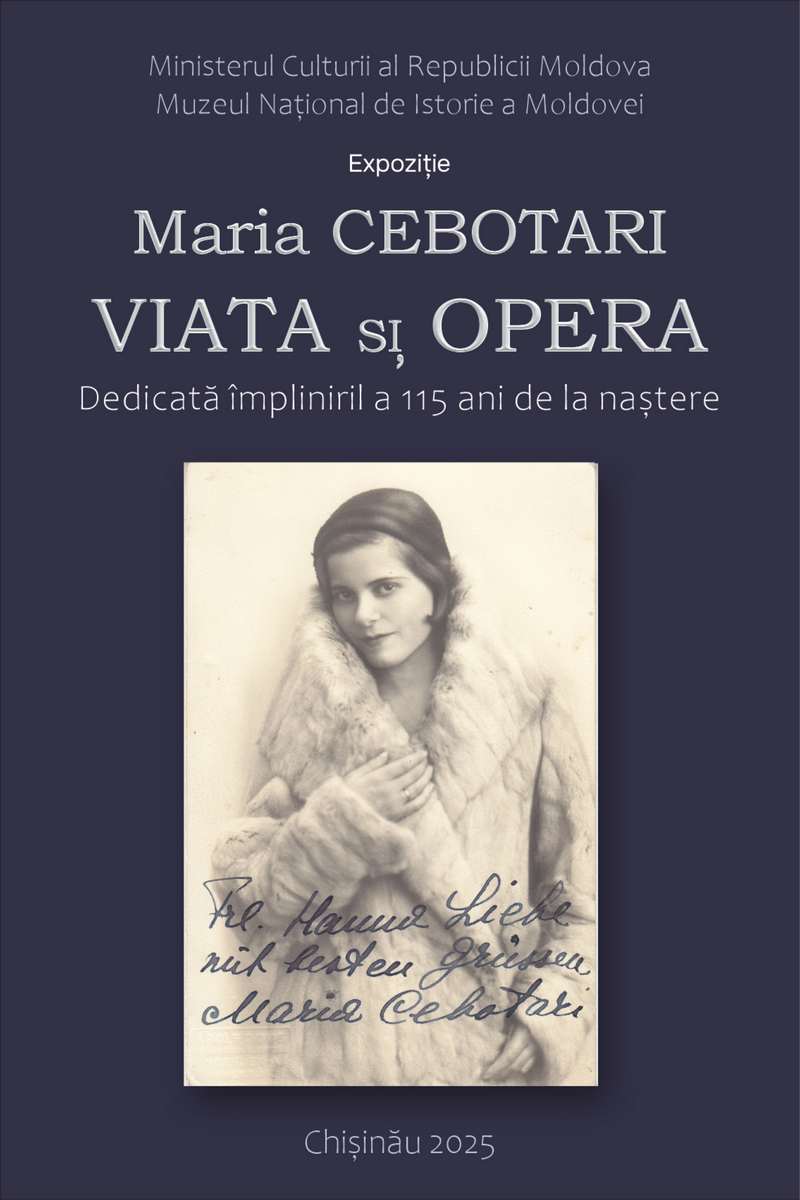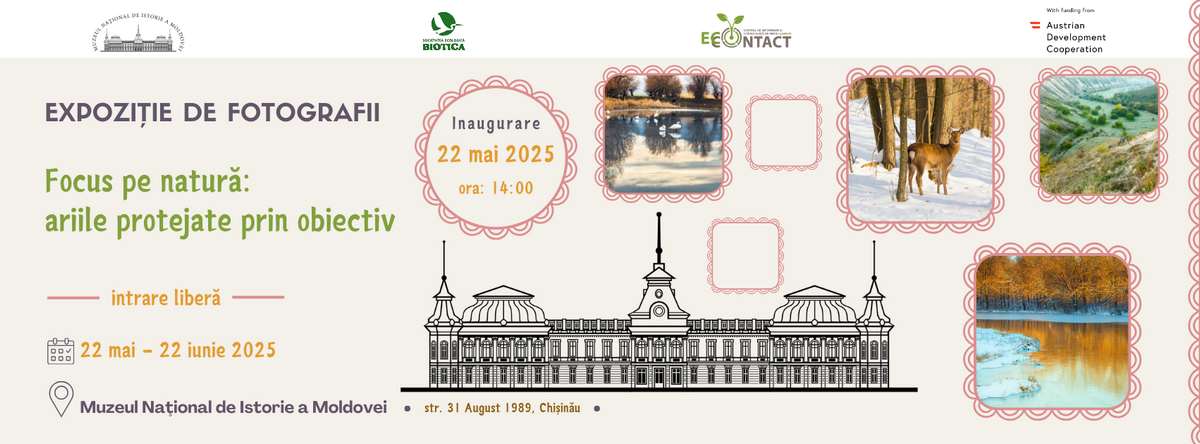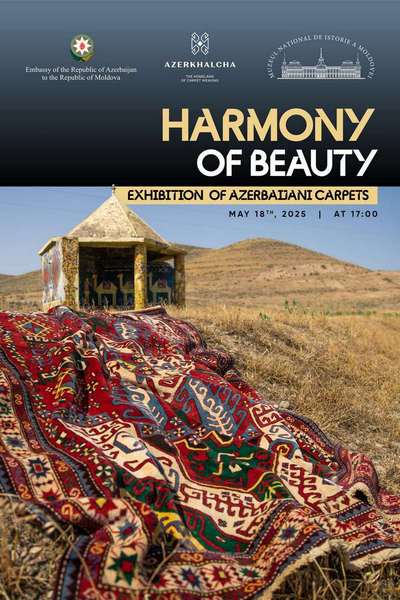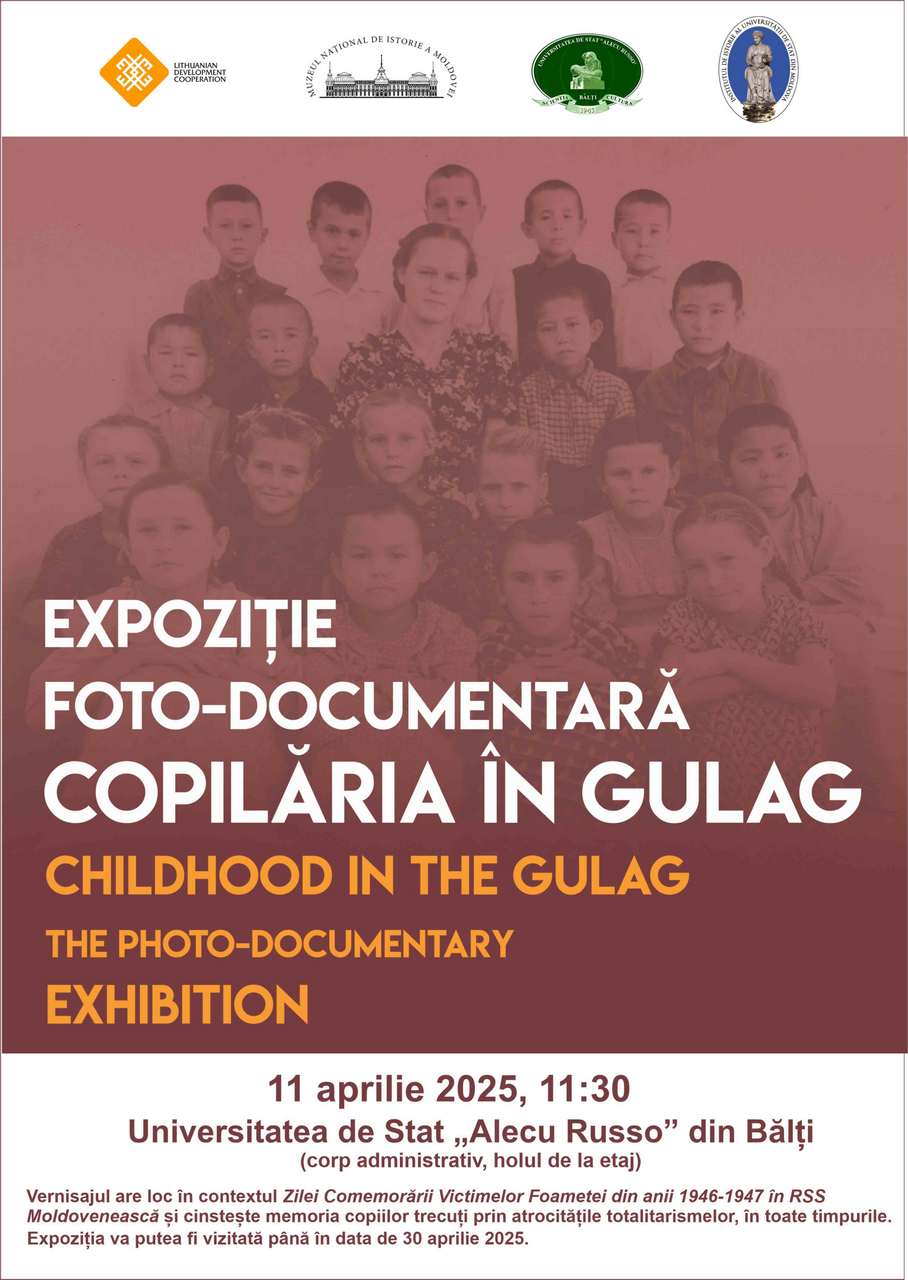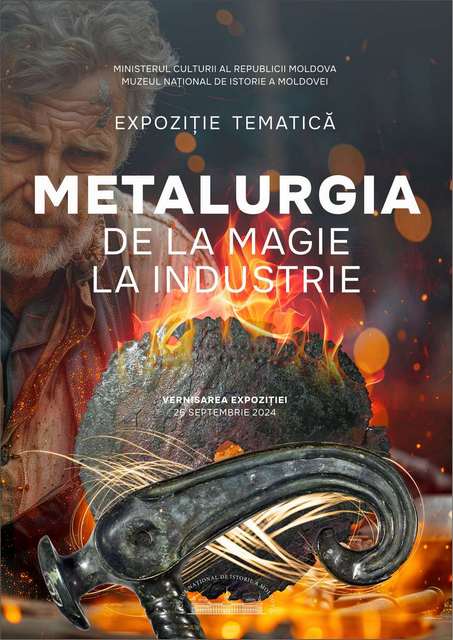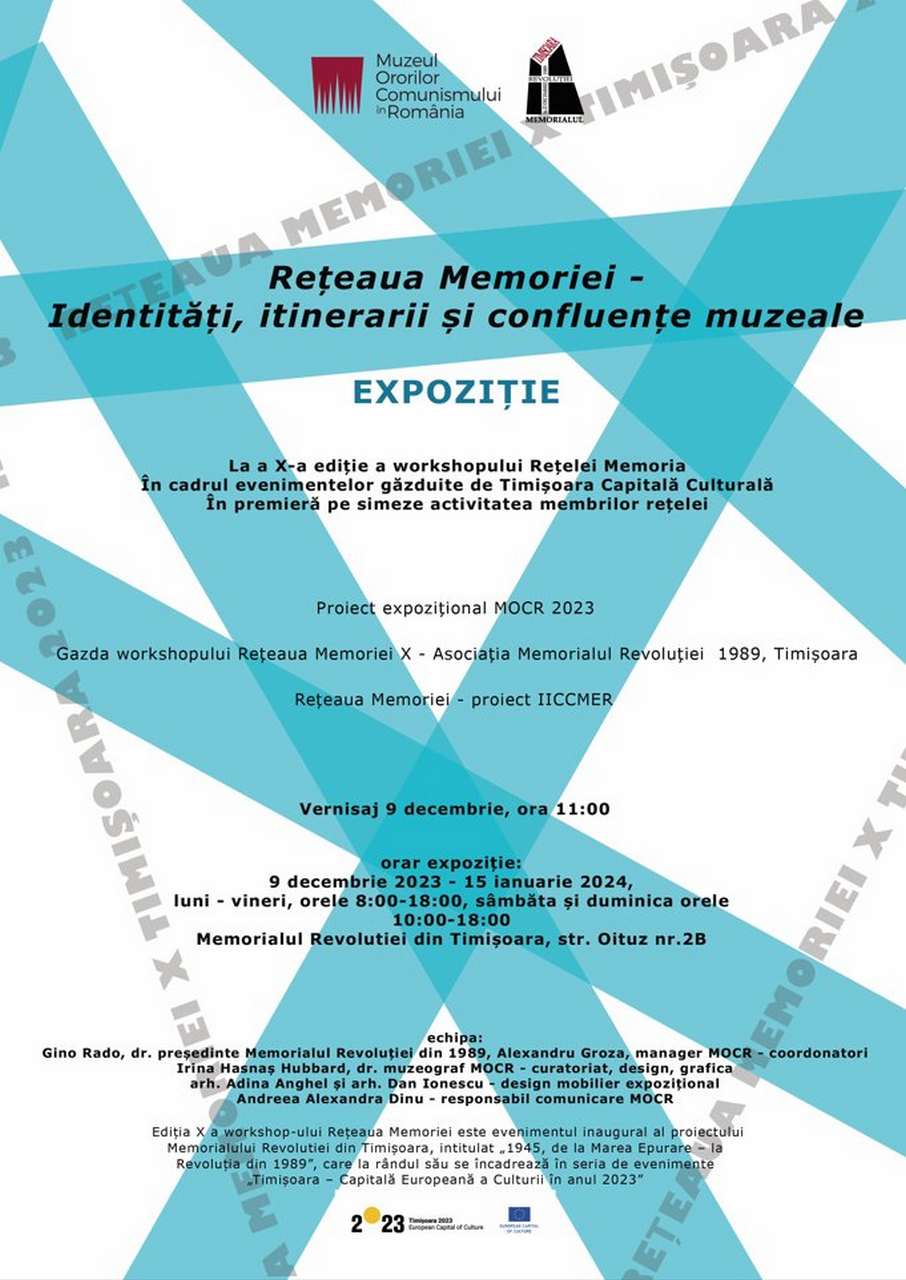 Between December 9, 2023 and January 15, 2024, in Timișoara, the exhibition "Memory Network - Identities, itineraries and museum confluences" will be open to the public, an event carried out as part of the 10th edition of the workshop "Rețeaua Memoriei", organized by the Institute of Investigation of the Crimes of Communism, the Timisoara Revolution Memorial, and the Museum of the Horrors of Communism in Romania - MOCR.
Between December 9, 2023 and January 15, 2024, in Timișoara, the exhibition "Memory Network - Identities, itineraries and museum confluences" will be open to the public, an event carried out as part of the 10th edition of the workshop "Rețeaua Memoriei", organized by the Institute of Investigation of the Crimes of Communism, the Timisoara Revolution Memorial, and the Museum of the Horrors of Communism in Romania - MOCR.
Through the Memory Network - Identities, itineraries and museum confluences, we present for the first time, in a unified space and concept, to the general public: both the Timișoara and visitors to the cultural capital, the concerns and projects of institutions and specialists interested in the history of communism. These institutions with different profiles and administrative structures, operate all over the country through people with different occupations and interests, but all converging towards a common denominator: the activation, preservation and transmission of recent memory.
The history of the Network begins in 2015, when the Institute for the Investigation of the Crimes of Communism and the Memory of the Romanian Exile (IICCMER) launches a legally formalized structure of the majority of public and private initiatives to preserve and capitalize on places of memory, to organize museum spaces that address the period communist in Romania and the Republic of Moldova.
Members of the network participating in the exhibition: the Institute for the Investigation of the Crimes of Communism and Romanian Exile, the Museum of Horrors of Communism in Romania, the Revolution Memorial in Timișoara, the National Museum of History of Moldova, the University Museum of Bucharest, the National History Museum of Romania, the Bratianu National Museum, Oradea Crișurilor Country Museum, Arad Museum Complex, Constanța Museum of National History and Archeology, National Museum of Romanian Literature, Iaşi House of Museums, Open air museum complex in memory of the victims of political repression, Mereni from the Republic of Moldova, ProMemoria Institute of History in Chisinau, Avdarma UTA History Museum, Găgăuzia, Buzău County Museum, Zalău County Museum of History and Art, Iuliu Maniu Memorial House, Bădăcin, Museum of Memories of Communism, Brașov, Marton Aron Harghita Museum, Reșiţa Museum of Amateur Cinema, Memorial House of the Victims of the Communist Dictatorship from Romania, the Museum of Abandonment, the Romanian Condition Cultural Society, Petrila, the Petroșani Mining Museum, the Museum of Collectivization, Tămăşeni, Neamţ, the Center for Information and Documentation on Totalitarian Regimes, the Gh. Gheorghiu Dej Memorial House, Bârlad, the Museum of the Communist Consumer, the Cloth Museum and Povesti, Mîndra, Șara Făgăraşului, Braşov.
The exhibition was designed and developed by a team consisting of: dr. Irina Hasnaș Hubbard, museographer - exhibition design and graphics; arch. Adina Anghel and arch. Dan Ionescu - exhibition furniture design; Rado Gino, president of the Timişoara Revolution Memorial together with Alexandra Groza, MOCR manager - coordinators and Andreea Alexandra Dinu - communication manager.
The exhibition can be visited between December 9, 2023 and January 15, 2024, from Monday to Friday between 8:00 a.m. and 6:00 p.m., and on Saturday and Sunday between 10:00 a.m. and 6:00 p.m., at the Revolution Memorial in Timisoara, on str. Oituz no. 2B.
The 10th edition of the Memory Network workshop is the inaugural event of the Timisoara Revolution Memorial project, entitled "1945, from the Great Purge - to the Revolution of 1989", which in turn is part of the series of events "Timișoara - European Capital of Culture in the year 2023".




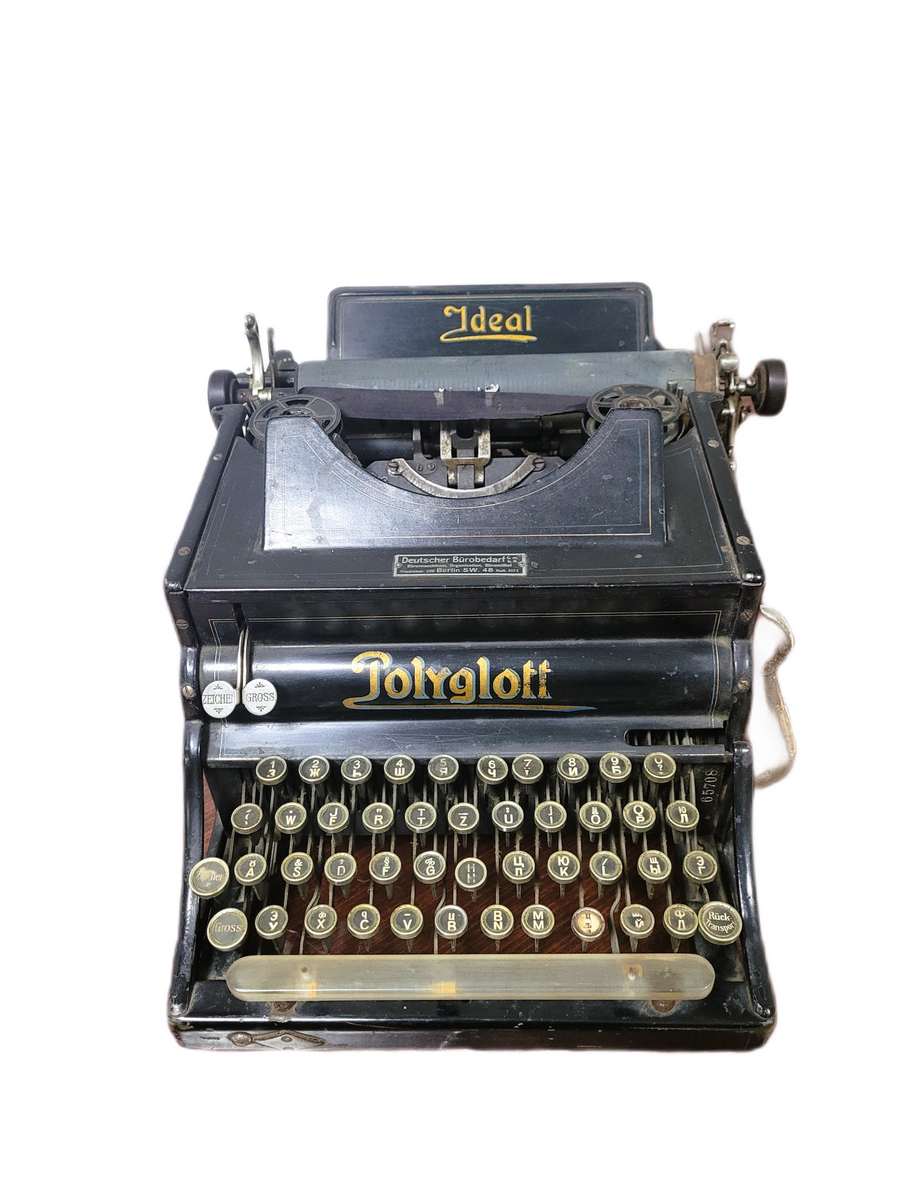
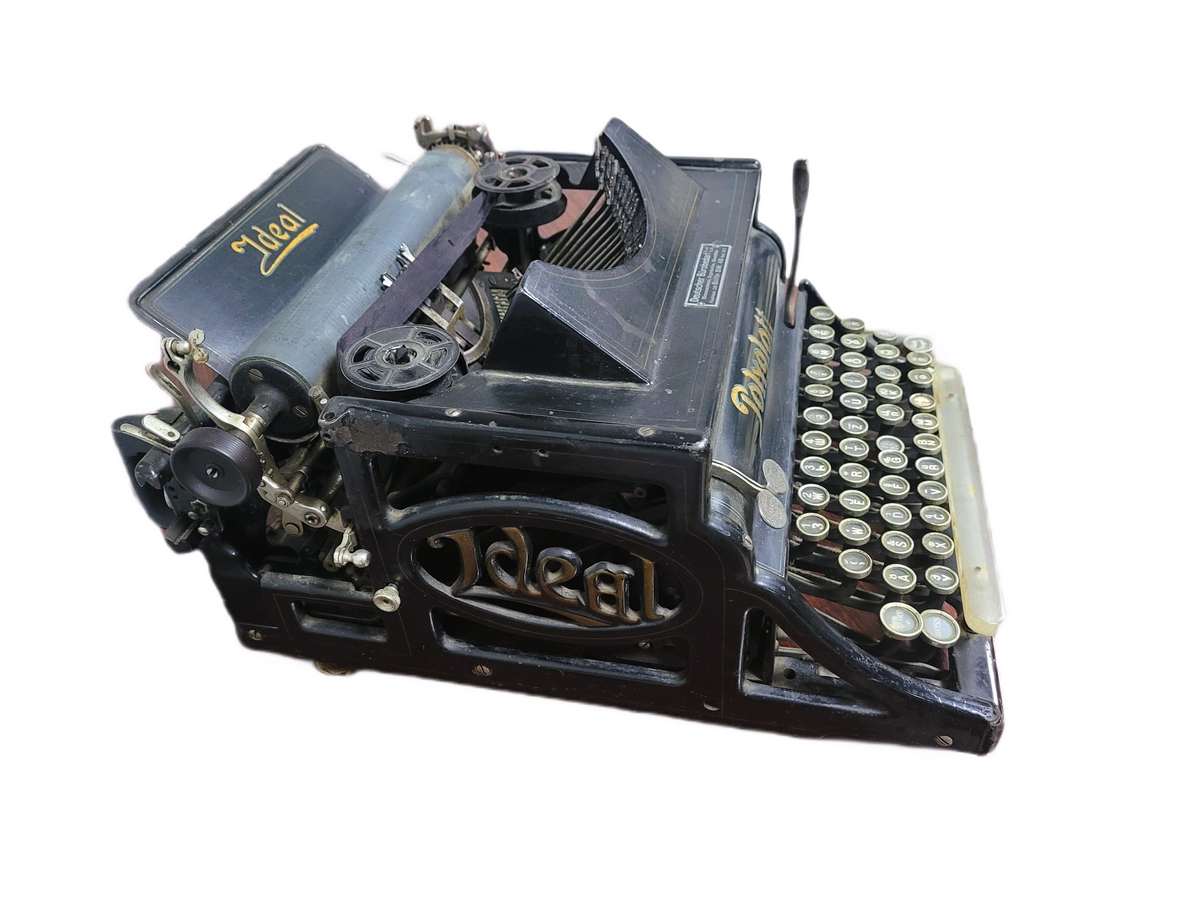 The side panels are elegantly decorated with refined cast-iron elements in the Art Nouveau style, displaying the brand name - "Ideal." The Polyglott model, featuring a bilingual keyboard patented in the United Kingdom by Max Klaczko from Riga, Latvia, was produced between 1902 and 1913, marking the first typewriter capable of writing in two languages. The "Ideal Polyglott" typewriter was actively sold in the Russian Empire and gained significant popularity in Poland, Bulgaria, and Serbia.
The side panels are elegantly decorated with refined cast-iron elements in the Art Nouveau style, displaying the brand name - "Ideal." The Polyglott model, featuring a bilingual keyboard patented in the United Kingdom by Max Klaczko from Riga, Latvia, was produced between 1902 and 1913, marking the first typewriter capable of writing in two languages. The "Ideal Polyglott" typewriter was actively sold in the Russian Empire and gained significant popularity in Poland, Bulgaria, and Serbia.






























